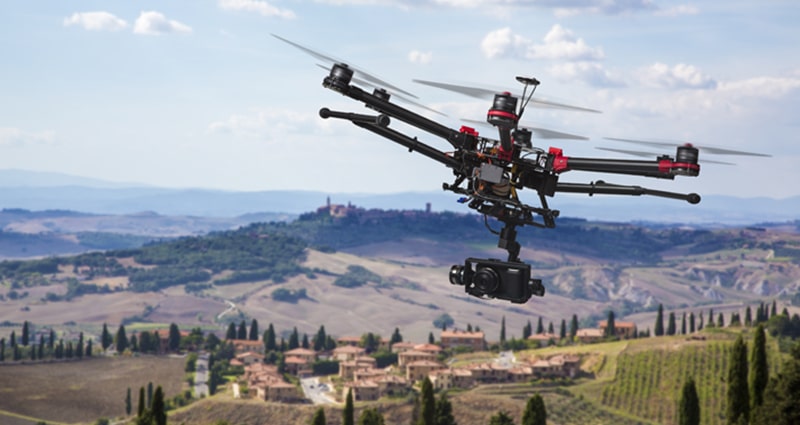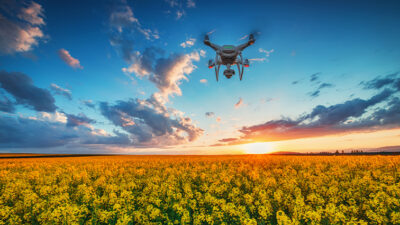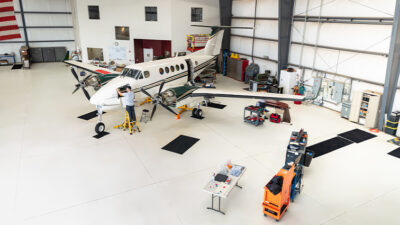Maximizing Safety and Minimizing Risk in Unmanned Aircraft Operations

In June 2016, the Federal Aviation Administration (FAA) published its long-awaited rules governing the commercial use of small Unmanned Aircraft Systems (UAS) in the National Airspace System (NAS). The rules will go into effect on August 29, 2016, and lay the groundwork for a tectonic shift in commercial “on demand” aviation operations at a cost-benefit ratio that has never before been seen in our industry. The proliferation of UAS technology is expected to surge in the next several years as the reliability of autonomous technology improves and flight crews become more adept at reducing errors, collectively minimizing the risk of mishaps and improving the industry safety “benchmark” record.
As the adoption rate increases, so will the likelihood of a mishap. It is essential that individuals and organizations understand that technology reliability with many existing UAS is highly dependent on the level of redundancy and the quality of materials/components. Today’s UAS in the marketplace are heavily reliant upon the Global Positioning System (GPS). Importantly, due to a lack of useful load, many platforms in the under 55lbs category of aircraft do not have the ability to carry redundant systems in the case of GPS failure and, if they do, the capability of stabilized positioning is significantly affected due to low quality navigational sensors. As a purchaser, unmanned aircraft with redundant systems will come at an increased price point; however, ensuring all single points of failures are mitigated with redundant capability provides the necessary flight reliability and safety standard that has long been recognized in traditional aviation. The quality of materials, components, and navigational sensors represents a significant safety risk. Many of today’s UAS are not engineered by traditional aircraft manufacturers and there is no mandate to utilize Type Certificated Parts (TCPs). This is not necessarily a bad thing, but could decrease the safety reliability for UAS as lower fidelity components may be used, which translates into greater risk exposure.
Commercial aircraft operators know very well that aircraft maintenance is a critical component to any operation. It ensures the highest level of safety and reliability in the aircraft life cycle. Similarly, UAS maintenance requires the same regard since the “system” creates a distributed operational environment that contains multiple points of failure. A UAS contains four major components necessary for operations: (1) the Unmanned Aircraft (UA), (2) Ground Control Station (GCS), (3) the datalink, and (4) the payload/sensor. Each component is equally critical to mission success.
Until the widespread implementation of Section 333 waivers for commercial UAS operations, and the impending growth curve that we are likely to see with the publication of Part 107, many manufacturers lack mandated maintenance requirements. This was primarily because UAS were not viewed as “aircraft” by many proponents, and further not necessary, as there is no “airworthiness” requirement within the proposed and soon-to-be implemented Part 107 regulations besides a remote pilot’s inspection. The spike in Section 333 petitions for exemption required maintenance procedures for the UAS but focused on pre-flighting and operator maintenance. The lack of TCP components built into many current commercial platforms creates an issue in tracking reliability and time between failure due to the lack of consistency in component quality and standards for reliability. Just as in manned aviation, scheduled maintenance practices should be performed. For the UA, it is critical to check for stripped servos, damaged Radio Frequency (RF) cables, cracked or chipped propellers, degraded structural components, appropriate weight and balance (UA with fuel or varied configurations), and so on, as these items are likely major failure points.
The GCS, depending upon the UAS, can look, operate, and function very differently. As one of the major components, failure can result in lost communications or worse, loss of control. The GCS contains the technology to provide command and control and video reception from the UA, for all kinds of operations. Whether the GCS is an external pilot box or a workstation style setup, the technology requires regular updates (much like those of Apple’s iPhone). A maintenance program for the GCS can be quite complex depending upon the complexity of the UA: redundant systems, displays, processing units, multiple RF radios, local area networks, etc.
The components associated with the datalink are connected directly to the autopilot or processor onboard the aircraft and the processing unit(s) internal to the GCS. The datalink is the wireless connection to the aircraft transporting command and control data packets and live video streaming over electromagnetic waves. Regular maintenance and inspection of antennas, ground data terminals, RF cables, RF connectors, and radio equipment, ensures a clean signal. Neglected equipment results in degraded transmission range, intermittent communication, and the potential of lost communications with the UA creating an emergency situation.
From a safety perspective, a camera or sensor can act as a backup navigational tool for Beyond Line of Sight (BLOS) Communications. Maintenance of the payload varies greatly, depending upon the sensor/payload package onboard the aircraft. Most active and passive sensor manufacturers recommend maintenance to be done by the manufacturer due to the sensitive technology located internally. Of equal importance, retractable payloads characteristically require maintenance and inspection of the deploying mechanisms, vibration mounts, and electronic stabilization connections.
One of the greatest methods to mitigating operational risk is professional education and safety training programs detailing knowledge, skills, and attitudes compulsory to a safety culture. Many UAS manufacturers are recognizing the need and benefit that a detailed training program and organized aircraft documentation provide. This includes better reliability and loss statistics realized by insurance underwriters, more professional remote pilots, and respect and appreciation from manned aviators.
UAS operations are inherently hazardous due to low altitude operations, proximity to ground objects, and the potential for operations in non-segregated airspace. A remote pilot’s understanding of the contingency logic onboard a UAS is what makes a remote pilot an “expert”. Many systems on the market, although intuitive, abridge the emergency reaction section of the training. It is essential from a safety and risk management perspective for the remote pilot to comprehend and understand how to react and how the aircraft will react in the case of an inflight emergency.
The impending publication by the FAA of the final rule governing UAS is a pivotal moment in aviation history, and will trigger widespread adoption of new technology that is safer than manned aircraft, and which can be implemented at far less cost than existing methods. With the surge in UAS activity that is expected to begin once Part 107 is official on August 29, 2016, it is essential that all readers understand the key factors that will influence safety and risk. The industry is at a key inflection point, and a core focus on safety will grow increasingly important as flight operations become more sophisticated and commercial operators generate lift in the market.
About the Author
Josh Olds is Vice President of Operations at the Unmanned Safety Institute, based in Orlando, FL. He has served in a variety of UAS operational roles operating and maintaining both fixed wing and rotorcraft Unmanned Aircraft Systems. Josh is a commercially rated pilot and an airframe and power plant mechanic. The most recent operation was in the private security sector as a shipboard pilot/maintainer for unmanned helicopters utilized in anti-piracy operations. In his operational roles, Josh has developed detailed operational and training guidance documents for a variety of industry sectors. In his current role as Vice President of Operations, Josh manages day-to-day operations, including the Institute’s Training Services and Safety Assurance Divisions. Josh also serves on Embry-Riddle Aeronautical University’s faculty as an Assistant Professor.

The Unmanned Safety Institute is a professional flight safety organization for individuals, enterprises, and organizations focused on integrating and operating UAS safely for civil or commercial purposes. The Unmanned Safety Institute provides UAS flight safety standards and training through the adoption and modification of time-honored aviation safety and training practices. USI certifications are recognized by many leading aviation insurance providers to include Global Aerospace, which selected USI as its official and exclusive UAS training provider under its SM4 Safety Initiative.
http://unmannedsafetyinstitute.org
© 2025 Unmanned Safety Institute (USI). All Rights Reserved.
Next ArticleRelated Posts

Part 108: The Next Step in BVLOS Integration and Drone Innovation
As the drone industry awaits the Federal Aviation Administration’s (FAA) forthcoming Part 108 regulations, the landscape of Beyond Visual Line of Sight (BVLOS) operations stands on the brink of transformation. These anticipated rules aim to standardize BVLOS flights, enabling more complex and expansive drone missions across various sectors.

Aviation Safety—Grounded!
When we talk about aviation safety, our attention often goes to aircraft operational concerns. They are important, but by no means do they represent all the risks in a flight department. So, what’s “the rest of the story”?

